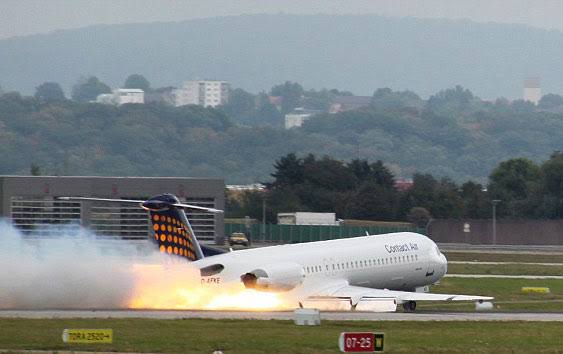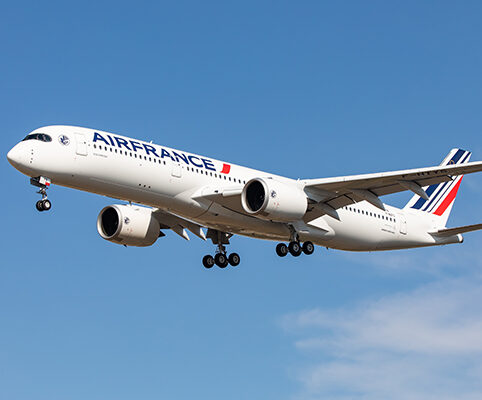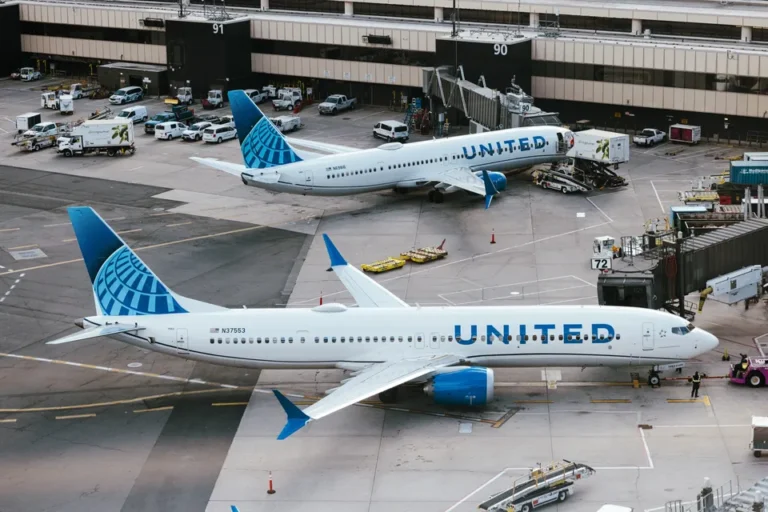Lufthansa Flight Forced to Make Belly Landing, 40 Passengers Injured in Harrowing Incident
Lufthansa Flight Forced to Make Belly Landing, 40 Passengers Injured in Harrowing Incident
In a terrifying turn of events, Lufthansa Flight LH1525, bound for Frankfurt, Germany, was forced to make a dramatic belly landing at Munich International Airport late Thursday evening. The incident, which involved a significant mechanical failure, has left at least 40 passengers injured, some critically. Authorities are still working to piece together the events leading up to the emergency landing, but the incident has sent shockwaves through the aviation community and sparked widespread concern over airline safety protocols.
The Flight and the Emergency
The Lufthansa Airbus A320, a well-known aircraft model that has flown millions of passengers safely around the world, was carrying 180 passengers and a crew of six when it departed from Rome, Italy, bound for Frankfurt. The flight, which was initially uneventful, began experiencing difficulties roughly 30 minutes before its scheduled arrival in Munich. Passengers reported hearing a loud bang from the aircraft’s undercarriage and feeling a sudden jolt in the cabin as the crew attempted to stabilize the plane.
According to initial reports from the flight crew, a mechanical failure in the landing gear system occurred, leaving the aircraft unable to deploy its landing gear. The crew immediately declared an emergency, and air traffic controllers at Munich International Airport were alerted. With no time to waste and no option to attempt a traditional landing, the flight crew was forced to initiate an emergency belly landing, a maneuver that involves landing the aircraft without the use of the landing gear, essentially causing the plane to slide along the runway on its belly.
The Belly Landing
As the aircraft approached the runway, emergency crews were positioned on standby, fully prepared for the worst-case scenario. At approximately 9:45 p.m., the aircraft touched down on the runway with a screeching sound, sparking flames from the friction of the fuselage scraping against the tarmac. Fortunately, the plane remained intact, and the crew’s skilled maneuvering kept the damage to a minimum.
However, the sheer impact of the landing caused significant damage to the underbelly of the aircraft. The fuselage suffered structural damage, and the aircraft’s emergency slides were deployed, forcing passengers to evacuate swiftly.
It was initially feared that the landing might cause a catastrophic fire or explosion, as flames briefly engulfed parts of the undercarriage. Fortunately, emergency services responded swiftly and managed to put out the flames before they could cause any further damage.
Injuries and Evacuation
The chaotic evacuation process saw multiple injuries, both minor and severe, among the 40 passengers, with several requiring immediate medical attention. Witnesses described scenes of panic as people scrambled to exit the plane, with many suffering from burns, broken bones, and lacerations. Several passengers were reported to have been thrown around the cabin during the emergency landing, which may have contributed to the severity of some injuries.
Emergency medical teams arrived on the scene within minutes and immediately began treating the injured, many of whom were taken to local hospitals for further treatment. Authorities later confirmed that none of the injuries were life-threatening, although a few passengers remained in critical condition overnight.
“The passengers were incredibly brave,” said flight crew member Anna Schmidt, who was part of the emergency evacuation. “The situation was terrifying, but everyone worked together to get out as quickly as possible. It’s a miracle that we didn’t lose anyone.”
Lufthansa Airlines has promised a full investigation into the incident, with the airline’s CEO, Carsten Spohr, offering heartfelt apologies to the passengers and their families. In a statement released to the press, Spohr expressed relief that the situation did not result in greater loss of life.
“The safety and well-being of our passengers and crew are always our highest priority,” Spohr said. “We are conducting a full investigation into the cause of this emergency landing and will take all necessary measures to ensure such an event does not happen again.”
The Investigation
In the wake of the incident, German aviation authorities have launched an official investigation into the cause of the mechanical failure that led to the belly landing. Early reports suggest that the failure could have been linked to a malfunction in the plane’s hydraulic or landing gear systems. Experts in the field are carefully examining the aircraft’s flight data recorder and cockpit voice recorder, which could provide critical insights into the sequence of events leading to the emergency.
“This is a highly unusual situation,” said aviation expert Dr. Stefan Braun. “While belly landings have occurred before, they are extremely rare and typically happen only in cases of serious technical malfunction. This event will likely prompt a review of current safety protocols and aircraft maintenance procedures.”
The Federal Aviation Office (LBA) of Germany, which oversees the safety of aviation operations in the country, has promised to release a full report once the investigation is complete.
Public Reaction
The harrowing incident has raised significant concerns over the safety standards of international airlines, especially in light of the serious injuries sustained by passengers. Many are questioning whether there may be systemic issues with aircraft maintenance or if this incident was an isolated event. Some have even called for stricter regulations regarding the age and maintenance of commercial aircraft.
“The whole world is watching Lufthansa now,” said Maria Becker, a passenger safety advocate. “While the airline handled the situation admirably by getting the plane on the ground safely, it’s crucial that we fully understand what went wrong to ensure this never happens again.”
Lufthansa’s reputation, however, is likely to be scrutinized in the coming weeks as the investigation progresses. Despite the airline’s swift response, the incident has sparked concerns among the traveling public, with many wondering how airlines ensure the safety of passengers when faced with such emergencies.
Looking Ahead
As the investigation unfolds, Lufthansa and German aviation authorities are working together to understand the technical causes of the belly landing. In the meantime, the airline has pledged to support the injured passengers and their families, offering financial compensation and medical assistance to those affected by the incident.
While Lufthansa continues to recover from this shocking event, the incident has once again highlighted the potential risks of air travel, even in an era when flying is considered one of the safest modes of transportation. The aviation community, regulators, and airlines themselves will undoubtedly learn valuable lessons from this harrowing incident, with the hope that it will lead to even safer skies in the future.
Lufthansa Flight LH1525’s emergency belly landing has undoubtedly left an indelible mark on everyone involved. While the injuries sustained by passengers were significant, the outcome could have been far worse. The swift action of the flight crew and emergency personnel undoubtedly saved many lives, and the resilience of the passengers is a testament to the human spirit in the face of crisis. As the investigation continues, one thing is certain: the aviation industry will remain vigilant in ensuring that safety remains its top priority.






